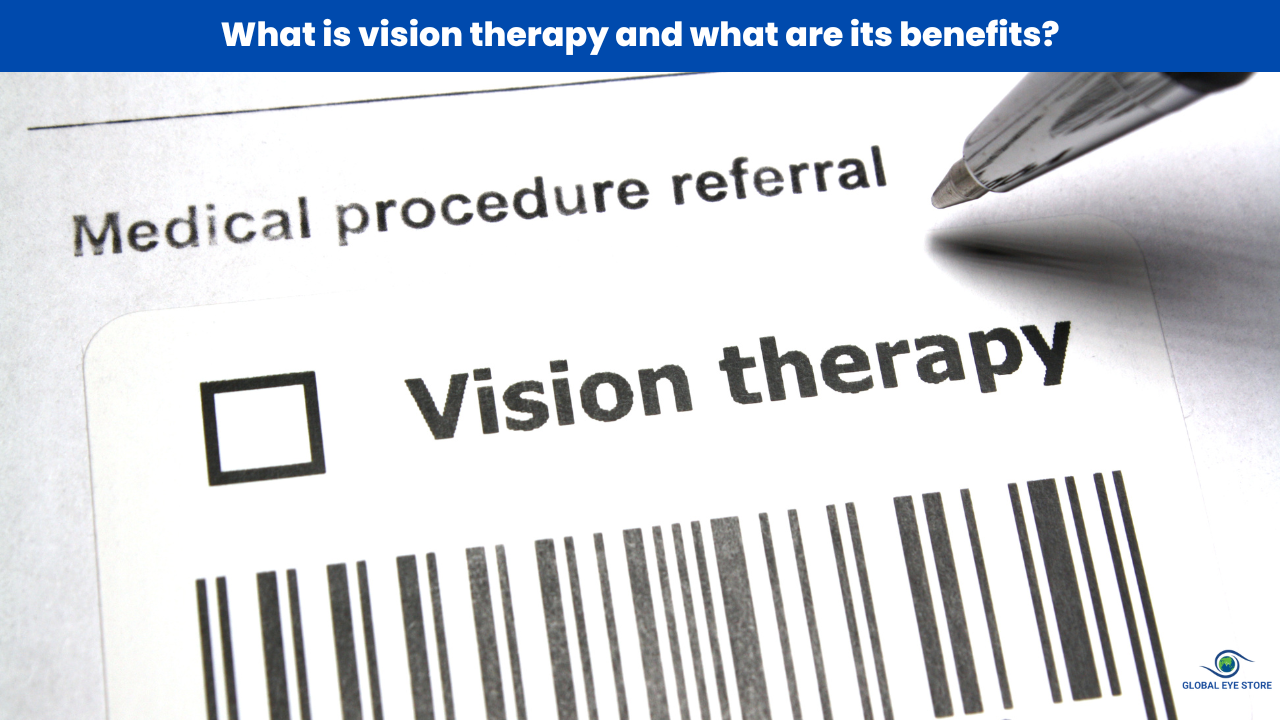What is vision therapy and what are its benefits
I. Introduction
In a world dominated by screens and digital interfaces, maintaining optimal vision health is more crucial than ever. Amidst various approaches to enhance vision, vision therapy emerges as a holistic solution. Let's delve into the world of vision therapy and explore its myriad benefits.
II. Understanding Vision Problems
Vision issues are pervasive, affecting people of all ages. From common refractive errors to more complex problems, our eyes undergo considerable stress daily. Recognizing the importance of vision health is the first step toward understanding the need for interventions like vision therapy.
III. What is Vision Therapy?

Vision therapy is a specialized form of therapy designed to address vision problems that cannot be corrected with glasses alone. It encompasses a range of exercises and activities tailored to improve visual skills, making it a comprehensive approach to eye care. Various types of vision therapy cater to specific visual challenges, ensuring a personalized treatment plan for each individual.
IV. Benefits of Vision Therapy
Improved Visual Skills
Vision therapy aims to enhance fundamental visual skills such as eye tracking, focusing, and coordination. These improvements contribute to a more efficient and comfortable visual experience.
Academic Performance Enhancement
Many learning difficulties are linked to visual issues. Vision therapy has shown remarkable results in improving academic performance, particularly in children with reading and writing challenges.
Vision Therapy for Adults
Contrary to common belief, vision therapy is not exclusive to children. Adults can also benefit significantly, especially those facing challenges related to work, daily activities, or age-related vision changes.
V. The Vision Therapy Process
Initial Assessment
The journey begins with a comprehensive assessment by a qualified vision therapist, identifying specific visual challenges and creating a baseline for progress tracking.
Tailored Therapeutic Activities
Vision therapy sessions involve a series of personalized activities and exercises designed to target identified issues. These may include eye movements, visual tracking exercises, and more.
Monitoring Progress
Regular check-ins and assessments ensure that the therapy is on track, allowing adjustments to the treatment plan as needed. Progress may manifest in improved academic performance, reduced eye strain, or enhanced visual comfort.
VI. Who Can Benefit from Vision Therapy?
Children with Learning Difficulties
Vision therapy has proven beneficial for children struggling with reading, writing, and overall academic performance. Addressing underlying visual issues can significantly impact their learning experience.
Individuals with Binocular Vision Disorders
Conditions like strabismus and amblyopia often require more than just glasses. Vision therapy offers targeted exercises to improve binocular vision, promoting better depth perception and coordination.
VII. Vision Therapy vs. Glasses
Complementary Approaches
While glasses provide a necessary correction for refractive errors, vision therapy goes beyond addressing underlying issues, making them complementary rather than mutually exclusive.
Long-term Solutions
Vision therapy aims for lasting improvements. Rather than relying solely on visual aids, individuals can experience enduring benefits that contribute to overall visual well-being.
VIII. Vision Therapy Myths Debunked
Common Misconceptions
Dispelling myths surrounding vision therapy is crucial for informed decision-making. Understanding the science behind the therapy can demystify common misconceptions.
Evidence-Based Practices
Vision therapy is backed by scientific research, with numerous studies demonstrating its effectiveness. An evidence-based approach helps separate fact from fiction.
IX. Case Studies
Success Stories
Real-life transformations showcase the tangible impact of vision therapy. From children overcoming learning challenges to adults experiencing enhanced work performance, these stories highlight the power of tailored interventions.
X. DIY Vision Exercises at Home
Simple Activities for Eye Health
Incorporating easy vision exercises into daily routines can contribute to maintaining good eye health. These activities can be particularly beneficial for individuals spending long hours in front of screens.
Tips for Incorporating Exercises
Making vision exercises a habit doesn't have to be daunting. Practical tips and reminders can help individuals seamlessly integrate these activities into their daily lives.
XI. Integrating Technology in Vision Therapy
Digital Tools and Applications
The modern age brings forth innovative solutions. Digital tools and applications have been integrated into vision therapy, offering engaging and interactive exercises that cater to different age groups.
Gamified Vision Exercises
Gamification adds an element of fun to vision therapy, especially for children. Gamified exercises not only capture their attention but also encourage consistent participation.
XII. Vision Therapy and Sports Performance
Enhancing Visual Skills for Athletes
Vision therapy isn't limited to academics; it extends to sports as well. Athletes can benefit from improved visual skills, including better hand-eye coordination and reaction times.
XIII. Cost Considerations
Affordability and Insurance Coverage
Addressing financial concerns is crucial. Understanding the cost of vision therapy and exploring insurance coverage options ensures that individuals can access the necessary care without breaking the bank.
XIV. Finding a Vision Therapy Specialist
Qualifications and Credentials
Choosing a qualified vision therapy specialist is paramount. Understanding their qualifications and credentials ensures that individuals receive the best possible care.
Patient Reviews
Reviews from previous patients provide valuable insights into the effectiveness of a vision therapy specialist. Positive testimonials can instill confidence in the decision-making process.
XV. Conclusion
In conclusion, vision therapy offers a holistic approach to addressing various visual challenges. From children with learning difficulties to adults facing work-related eye strain, the tailored interventions provided by vision therapy can make a significant impact on







.jpg)

